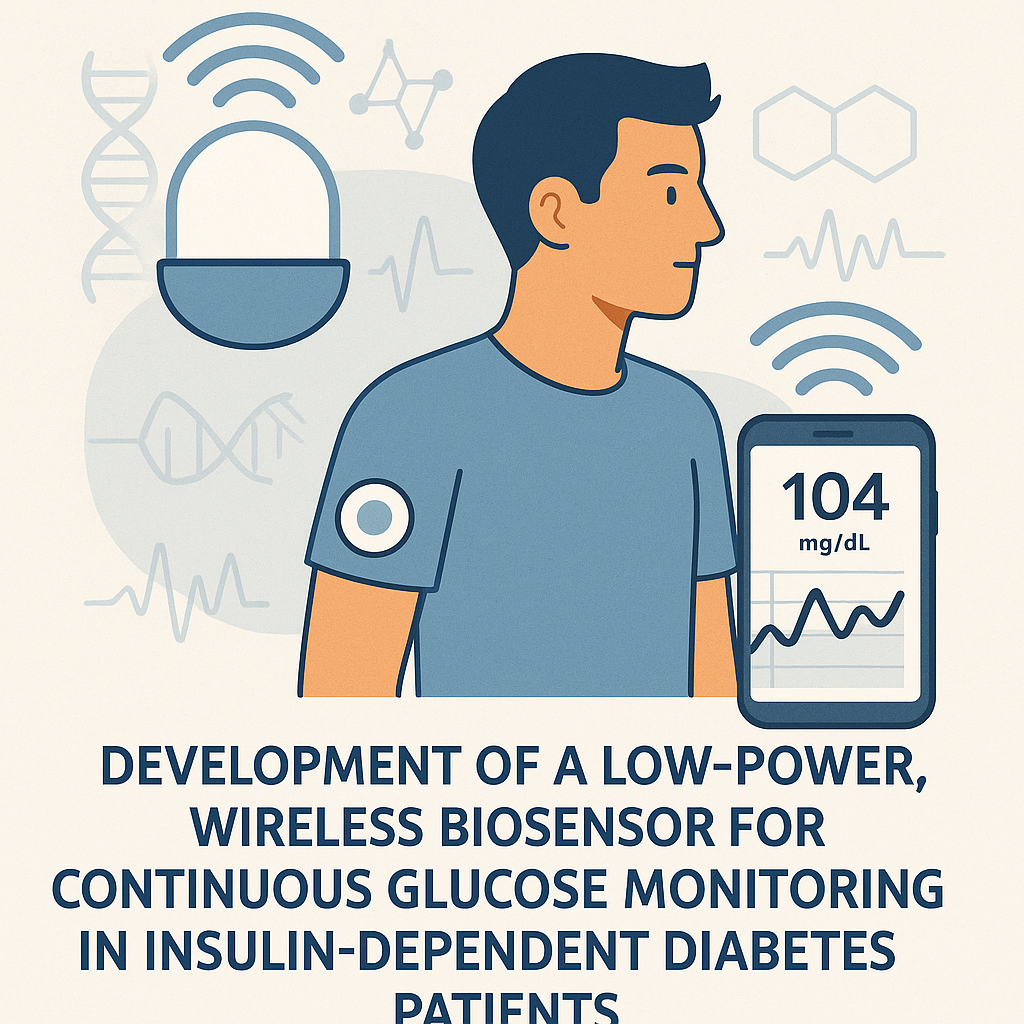Introduction
Diabetes management is a critical aspect of health for millions of individuals worldwide, particularly for those with insulin-dependent diabetes. Continuous glucose monitoring (CGM) has emerged as a revolutionary tool in this domain, providing real-time glucose levels to help patients maintain optimal blood sugar levels. The development of a low-power, wireless biosensor for CGM represents a significant advancement in diabetes care, enhancing the quality of life for patients and improving health outcomes. This blog will delve into the technological advancements and implications of these biosensors.
What is Continuous Glucose Monitoring?
Continuous glucose monitoring involves the use of a small device that tracks glucose levels in the interstitial fluid just beneath the skin. This technology allows patients to receive real-time data about their glucose levels, which is crucial for effective diabetes management. The key components of a CGM system include:
- Sensor: Measures glucose levels continuously.
- Transmitter: Sends data wirelessly to a receiver.
- Receiver: Displays glucose readings and trends.
The Need for Low-Power Wireless Biosensors
Traditional glucose monitoring devices often require frequent calibration and can be cumbersome due to their size and power requirements. Low-power wireless biosensors offer several advantages:
- Extended Battery Life: By using low-power components, these sensors can last longer without needing a recharge or replacement.
- Minimized Invasiveness: Smaller sensors can be implanted with minimal discomfort, making them more patient-friendly.
- Improved Data Transmission: Wireless technology ensures that data can be sent to mobile devices or cloud platforms for easy access and analysis.
Key Technologies in Biosensor Development
The development of low-power wireless biosensors involves the integration of various cutting-edge technologies:
- Nanosensors: Utilize nanomaterials to enhance sensitivity and specificity for glucose detection.
- Wireless Communication: Employ technologies like Bluetooth and NFC for efficient data transmission.
- Microprocessors: Low-power microcontrollers that manage data processing and communication.
- Power Harvesting: Techniques to harvest energy from the body or environment, reducing reliance on batteries.
Challenges in Developing Biosensors
Despite the potential benefits, several challenges must be addressed in the development of low-power wireless biosensors:
- Biocompatibility: Ensuring the materials used in sensors do not provoke an immune response.
- Calibration: Developing reliable calibration methods that minimize discomfort and improve accuracy.
- Data Security: Safeguarding sensitive health data transmitted wirelessly.
- Cost-Effectiveness: Creating affordable devices that can be widely distributed and used.
The Future of Continuous Glucose Monitoring
The future of continuous glucose monitoring with low-power wireless biosensors looks promising. Here are some potential advancements:
- Integration with Smart Devices: Enhanced connectivity with smartphones and wearables for real-time data access and analysis.
- Artificial Intelligence: Utilizing AI algorithms for predictive analytics, helping patients to anticipate glucose fluctuations.
- Personalized Medicine: Tailoring diabetes management based on individual metabolic responses and lifestyle factors.
Conclusion
The development of low-power, wireless biosensors for continuous glucose monitoring is set to revolutionize diabetes management for insulin-dependent patients. By addressing the challenges and leveraging technological advancements, these biosensors can offer a more user-friendly, efficient, and effective way to monitor glucose levels. As research continues and technology evolves, the hope is that these innovations will lead to better health outcomes and improved quality of life for individuals living with diabetes.



